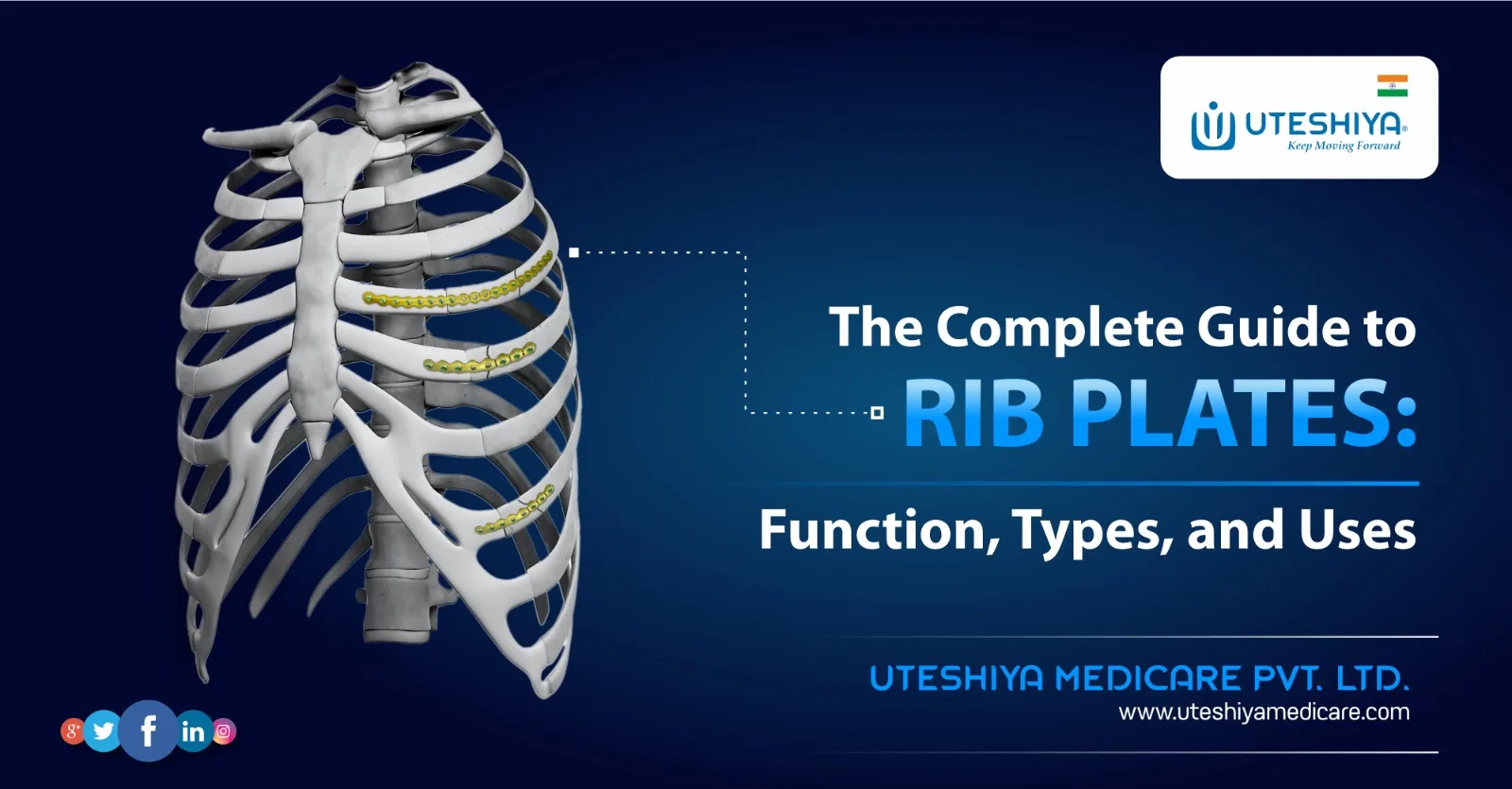
In orthopedic surgery, rib plates are essential in stabilizing and repairing rib fractures, abnormalities, or injuries. They help heal the rib cage by reinforcing its structural integrity when adequately placed. This complete reference on orthopedic rib plates will cover everything from their purpose and materials to their uses, production, advantages, things to keep in mind, and potential future developments.
What is a Rib Plate?
A rib plate, also called a rib fixation plate or rib fracture plate, provides structural support and stability to broken or cracked ribs. It is surgically implanted onto the surface of the rib and helps in the healing process. It is usually constructed of biocompatible materials like titanium or stainless steel.
Types of Rib Plates
A wide range of rib plate configurations, sizes, and shapes are available to treat a wide range of rib fractures and patient anatomy. Some examples are:
Straight Plates
Minor deviations or cracks in the ribs may necessitate a linear rib plate.
Contoured Plates
The uniquely shaped anatomically designed rib plates conform to the shape of the ribs and offer a more secure and comfortable fit.
Locking Plates
Special screws are included with locking rib plates that lock into the plate, providing an improved method of fixation and stability.
Reconstruction Plates
Reconstruction rib plates substantially restore rib anatomy after severe fractures or deficiencies in ribs.
Materials Used in Rib Plates
Rib plates are mainly made from strong corrosion-resistant biocompatible materials that are lightweight. The most popular materials are titanium and stainless steel because of their high compatibility with human bodies and outstanding mechanical qualities.
- Orthopedic implants must be made from titanium because it is biocompatible and has an excellent strength-to-weight ratio.
- Stainless steel is cheap and offers reliable stability as a fixing material for rib plates.
Applications of Rib Plates
Trauma involving the ribs, chest wall deformities, and chest wall tumors warrant different clinical scenarios. They offer crucial support and stabilization to facilitate correct healing and regeneration of rib architecture.
Traumatic Rib Fractures
Traumatic fractures of the ribs from auto accidents or falls can be treated with rib plates.
Rib Deformities
The deformities like pectus excavatum and pectus carinatum are instances of inborn rib abnormalities that can be addressed using rib plates.
Rib Tumors
This is done for cases involving tumor removal where simple rib resection may not be possible. Such support allows surgical treatment of malignancies or tumors on the ribs, as well as reconstruction after the removal of tumors.
How Rib Plates are manufactured?
Rib plates are made using advanced engineering and precision techniques that involve CAD design based on patient-specific anatomy and surgical requirements.
- Each patient’s unique dimensions are used to make custom rib plates for maximum stability and comfort.
- Techniques such as 3D printing, which involve precision machining and additive manufacturing processes, are employed in the fabrication of rib plates.
- There is a need for extensive quality control testing to ensure biocompatibility, mechanical strength, and dimensional accuracy of these implants.
Benefits of Using Rib Plates
Some benefits that come with using them include improved stability, reduced pain levels, and lower risk factors for complications during orthopedic surgeries. The use of rib plates results in early mobilization by providing tight fixations and straightening fractured ribs, thus speeding up the healing process.
Considerations When Choosing a Rib Plate
Orthopedic surgeons take the patient’s anatomy, fracture pattern, and surgical technique into account when choosing a rib plate. The selection of a rib plate is impacted by the nature and extent of the damage, along with to the patient’s general well-being and way of life.
- Fracture pattern: The nature and extent of the rib deformity or fracture.
- Patient’s anatomy: The patient’s ribs, including their size, shape, and position.
- Surgical technique: The surgical procedure and technique employed for fixing.
Maintenance and Care
For rib plates to work as intended and last as long as possible after implantation, they need special attention and care. In order to check on the patient’s progress throughout healing and the stability of their implants, doctors recommend that they schedule frequent follow-up visits.
Regular Follow-up
Regular follow-up appointments are necessary for patients to track their healing progress and evaluate the integrity of their implants.
Activity Restrictions
While they are still mending, patients may be told to ease up on the heavy lifting and other physically demanding tasks.
Complication Management
To guarantee positive results, it is crucial to promptly address any problems or complications connected to the rib plate.
Future Trends in Rib Plate Technology
A number of new developments are influencing how rib plate technology will develop in the future. The following have been developed as part of these:
Biodegradable Implants
A solution to the problem of implant removal surgery is the creation of biodegradable rib plates. These plates dissolve slowly over time, effectively removing the implant.
Patient-Specific Implants
3D printing and sophisticated imaging allow for the fabrication of rib plates that are uniquely suited to each patient’s anatomy.
Minimally Invasive Techniques
Using less intrusive surgical methods to mend ribs shortens recovery time and lessens surgical trauma.
Conclusion
In orthopedic surgery, rib plates play a crucial role by stabilizing and supporting ribs that have been cracked or damaged. Rib plates are always evolving to provide better results and care for patients thanks to innovations in materials, manufacturing processes, and surgical procedures. Orthopedic surgeons can improve patient outcomes and quality of life by using rib plates successfully.

